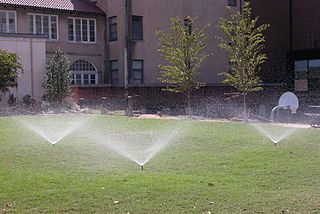From Guest Blogger Izzy: How to Conserve Water in the Summer

The next wave of progress is likely to come from small scale changes, as opposed to big ones. Every day, people are wasteful. Even those who now recycle and have installed solar panels could still be wasting large amounts of resources every day without realising it. It isn’t their fault – this wastage is likely to come from everyday activities they have done since childhood.
Today’s focus is on water. With summer just beginning, and with several parts of the world hit by droughts, it’s an ideal time to pay some attention to H2O. There are several little things you can do to cut down on the amount of water you are using, or better utilise the water you already use.
Don’t water the garden in the day time
Simple science will enlighten you as to why watering your plants during the day is a bad idea. In the middle of summer, most of the water you pour on to your plants won’t get absorbed, as it will simply evaporate before it ever gets to the roots. So not only are you wasting water, but you’re also jeopardising the plants.
So, alternatively, try watering early in the morning, or in the evening. Evening is ideal, as you are giving the plants all night to absorb the water they need. There are further watering steps you can take, such as removing wasteful sprinklers altogether, but there is an alternative that stands to save even more water. . .
Avoid water hungry plants
Plant life has colonised every area of the globe. From icy tundras to arid deserts. The have proved to be just as adaptable as animals and humans. So why not utilise this adaptability to your eco advantage?
Do some research into plants that survive in drought conditions. You’ll find that this isn’t just limited to cactus. There are hundreds of flowers plants, bushes, and trees that have adapted to go much longer without water than plants that thrive in locations where rainfall is plentiful. If you rotate these plants in as you re-bed in the spring, it will only take a few years to get a garden that can easily survive days, even weeks, without water.
Fix tiny toilet leaks
Turning our attention inside now, the bathroom is an obvious target for water saving. But it can sometimes be difficult to spot ways to be more water efficient. If there isn’t a major leak, and you are already as efficient in the shower as you possibly can be, where do you start?
One area you may have overlooked is the toilet. Because it has been manufacturer to make the refilling automatic, you can turn a blind eye to any potential water wastage in the system. For example, even the smallest leak with the tank could lead to gallons of water leaking out accumulatively over the course of a year. One way to find out is to put some food dye in there. Leave it in there, and after a few minutes, look in the bowl, and around the whole toilet. If the food dye appears anywhere but the tank, you have a leak.
Stop doing things by hand
This may seem counter-intuitive, but doing certain day to day tasks by hand actually wastes water. As we stated at the start of the article, the leaps forward in the eco-manufacturing sectors means some automated processes are now much better at conserving water than we are when left to our own devices.
One such example is an energy efficient dishwasher. On average, a dishwasher designed to conserve water can clean your plates and utensils with a fraction of the water (as less as 1/8th) you are using cleaning them by hand. Another automatic alternative you should consider are eco-conscious car washes. Again, doing things by hand at home can use up a lot of liquid, whereas modern car washes can cut this in half just by utilising clever technology and techniques.
